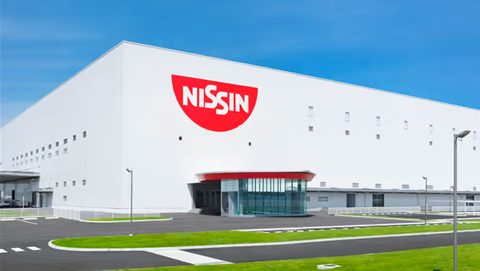In a year where global developments (geopolitical and trade tensions. inflation etc) are creating much uncertainty, businesses in the region are likely to be cautious. However, with continued digital transformation critical across industries, IT spending is expected to stay resilient — led by the need to embrace emerging technologies, such as Gen AI, and safeguarding the businesses from cyberthreats that are moving into new surfaces.
To get a pulse on the IT spending outlook across Southeast Asia in 2025, and learn why CIOs and CTOs must continue to grow and protect their digital core, iT News Asia speaks exclusively with Daniel Gunawan, Technology, Data and AI Lead, Southeast Asia, Accenture.
iTNews Asia: What is the outlook like for tech investment and spending by tech decision makers and organisations in South-east Asia this year? Given the flux in global market, how should they navigate the current uncertain economic uncertainty when it comes to tech investments and spending?
Tech investment is expected to continue growing in 2025, albeit at a potentially moderated pace due to the prevailing global economic uncertainty.
While sectors like e-commerce, fintech, and cloud services remain strong, the impact of geopolitical tensions, potential trade wars, and inflation will force tech decision-makers to be more strategic and selective in their investments.
Specific countries within the region will experience varying degrees of impact, with developed nations like Singapore potentially demonstrating more resilience compared to emerging economies that could face greater currency fluctuations and inflationary pressures. The increasing adoption of digital technologies across all industries will still make tech spending a necessity, though more scrutiny of ROI will be evident.
Tech investment is driven by two factors: a volatile macro environment and rapid technological change, with Gen AI leading the way. Organisations that adopt and scale AI now, where it's already adding value, will be better positioned for growth, efficiency, and resilience.

In APAC specifically, AI applications in areas like customer service personalisation, supply chain optimisation, and predictive analytics for e-commerce are gaining significant traction, which should continue through over the rest of the year.
- Daniel Gunawan, Technology, Data and AI Lead, Southeast Asia, Accenture.
Businesses should build a ‘cognitive digital brain’- an adaptable structure that integrates with existing data. Pre-trained agents can be customised with company-specific information, accelerating product development, improving efficiency, and enhancing decision-making. This approach helps businesses scale effectively by focusing on leveraging AI's power, rather than its complexities. We’re seeing a shift from early AI experiments to strategic implementations that create real value.
Given the diverse regulatory landscape across APAC, businesses should ensure their AI deployments adhere to local data privacy and ethical considerations, for example, some countries have stricter rules around the storage and transfer of data. They should also look at leveraging cloud infrastructure based locally to assist with this.
Trust is also crucial for unlocking AI’s benefits. Accenture’s Tech Vision report found that 82 per cent of executives in Singapore believe communicating AI strategy to employees is key to building trust and driving adoption.
This trend is expected to be echoed throughout APAC, where transparency and clear communication around AI initiatives will be essential to gain workforce buy-in and navigate potential cultural nuances regarding technology adoption.
Ultimately, clear governance and a technology roadmap ensure transparency, reduce uncertainty, and maximise ROI from tech investments.
For APAC companies navigating economic uncertainty, this means prioritising projects with clear business value and demonstrating strong return potential. They should focus on building resilient supply chains, leveraging local cloud services where possible, and focusing on agile methodology to adapt to the rapidly changing global and regional landscape.
iTNews Asia: What will be the key drivers for change over the next 12 months that are key for a business to remain competitive? In many of your reports, Accenture has emphasised that the CIO and CTO need to focus on their digital core, investing in IT that are critical to their corporate strategy and which can accelerate their company’s growth.
The key drivers for change in the next year will stem from external shifts, such as evolving customer expectations, the rise of big data and generative AI, and the need for agility in a volatile economy. Modernising systems, upgrading tech, bridging data silos, and embracing AI are all responses to these forces.
Accenture’s Life Trends report shows more than half of global consumers prefer quick solutions, with more than two-thirds in APAC favouring brands that educate through blogs and videos. In Singapore, almost all executives we polled agree that maintaining a consistent AI personality is vital for success.
To succeed, businesses must blend AI efficiency with their brand identity, creating personalised experiences. Gen AI is reshaping jobs, making it crucial to bridge the skills gap, especially in critical thinking, creativity, and adaptability. Empowering employees with AI skills and fostering human-AI partnerships boosts both autonomy and collaboration.
As cyber threats evolve, businesses must adopt advanced AI-powered defences to safeguard against growing cybercrime risks.
iTNews Asia: From a tech debt perspective, Accenture describes investing in Gen AI as a classic catch-22 for businesses. Why catch-22?
Investing in Gen AI can feel like a classic catch-22 for businesses because it requires balancing the pursuit of innovation and growth with the risk of adding to existing technical debt.
Gen AI demands significant investment in infrastructure, talent, and integration, but without a strategic approach, it can deepen inefficiencies in outdated systems rather than alleviating them.
We advise that companies aiming to expand their generative AI capabilities should allocate approximately 15 percent of their IT budget to remediating technical debt as a “sweet spot” between current and future needs.
iTNews Asia: If we look at companies investing in AI and balancing against tech debt, how can they balance their Gen AI spending initiatives to spur innovation and growth?
We've identified three key engineering principles that help organisations make the most of their innovation budgets. These principles drive efficiency gains and help manage technical debt by building a flexible digital core:
- Companies must embrace modern cognitive architectures, powered by AI, that mimic human-like learning and respond flexibly to changing data and user needs. This shift from instruction-driven to intent-driven systems empowers organisations to make real-time, data-informed decisions. CIOs and CEOs must prioritise this AI-first approach, integrating AI into core processes to maintain a competitive edge.
- Connecting data insights with real-time action is paramount. By establishing a continuous flow of data between core systems, organisations can unlock the power of hyper-personalised experiences and drive significant improvements in business outcomes. This requires close collaboration between CIOs and CDOs to seamlessly integrate AI-driven analytics, while CEOs must champion this transformation by aligning overall business strategy with these crucial technological advancements.
- By strategically partnering with both established players and disruptive startups, organisations can rapidly deploy cutting-edge technologies while benefiting from enhanced security, reliability, and seamless integration. Crucially, this requires close collaboration between CIOs, CEOs, and CSOs to ensure these ecosystem choices align with both technical and business priorities, ultimately minimising risk and technical debt.
iTNews Asia: Accenture believes organisations who are ‘re-invention ready’ are more than three times more likely to succeed in scaling high value Gen AI cases. What advice can you give to businesses who may be more risk-averse and cautious on IT spending, and what steps can business leaders take to be more ready?
For risk-averse businesses, the key to successfully scaling high-value generative AI initiatives is to invest in building a flexible digital core that supports continuous innovation.
Adopting a phased approach, starting with smaller, manageable AI projects that demonstrate value, helps reduce risks.
Business leaders should align AI investments with clear objectives to drive efficiency, better decision-making, and growth.
For example, building an AI-powered ‘cognitive digital brain’ can serve as the central nervous system for decision-making and learning, ensuring businesses are prepared for future opportunities.
iTNews Asia: What applications or industries have the transformative potential of AI made the most impact in productivity and efficiency gains, and is already delivering real and tangible business returns? Or is it too early to tell?
The transformative potential of AI varies across industries, as every business and sector faces unique challenges and opportunities.
In banking and financial services, we’re already seeing AI deliver real results in a variety of areas, such as personalised customer experiences, fraud detection, risk management, and even algorithmic trading, leading to cost savings, better customer satisfaction, and increased revenue.
Retail is also experiencing major strides with AI, especially in personalised recommendations, inventory optimisation, and supply chain management, driving sales and efficiency. In manufacturing, AI-powered digital twins and predictive maintenance are improving productivity and operational performance.
While AI adoption varies across sectors, its transformative impact is clear and will continue to shape industries well into 2025 and beyond.
iTNews Asia: If we look at the cyber security threat landscape, it is not getting better, but worse, the scale, volume and velocity of cyberattacks and ransomware threats are expected to rise further in 2025, with criminal actors also leveraging AI to launch using sophisticated cyberattacks which can be automated and bypass existing security measures. Have businesses in APAC underplayed the seriousness and potential consequences of a cyber security breach?
The cybersecurity threat landscape is not just stagnant; it's actively worsening, with the scale, volume, and velocity of cyberattacks, particularly ransomware, projected to escalate significantly in 2025. Compounding this issue, malicious actors are increasingly leveraging the power of AI to launch sophisticated and automated attacks, capable of circumventing existing security measures.
There is a worrying reality that many businesses in APAC have, perhaps inadvertently, underplayed the gravity and potential ramifications of a cybersecurity breach. This underestimation is not just a minor oversight; it's a significant business vulnerability.
Accenture's latest research paints a concerning picture. While CXOs across Southeast Asia express unease about emerging cyber threats like ransomware and deepfakes, less than half or 48 percent feel truly equipped to defend themselves. This figure pales in comparison to the 57 percent in Europe and 54 percent in North America who feel similarly prepared, highlighting a critical gap in cybersecurity readiness within the APAC region. This is not just about perception, but a genuine disparity in preparedness that demands immediate attention.
The rapid and widespread adoption of AI is simultaneously driving innovation and creating new vulnerabilities. The integration of AI exposes previously secure systems to new attack surfaces. Furthermore, the advent of generative AI is providing malicious actors with powerful tools to develop more sophisticated and frequent attacks. This confluence of factors elevates the necessity for robust cybersecurity measures to an absolute imperative, demanding that businesses rethink their security posture.
iTNews Asia: How critical is it for them to keep up with advances in security, and to have robust governance and risk management frameworks to mitigate against cybersecurity risks?
To effectively mitigate these escalating risks, businesses must embark on a journey of decisive action, focusing on key strategic areas. First and foremost, businesses need to make strategic investments in advanced, cutting-edge cybersecurity solutions that fully leverage the power of AI for defence.
This includes implementing AI-powered threat detection systems capable of analysing real-time data to identify anomalies and thwart attacks before they can do harm. It also requires the adoption of quantum-proof security measures, implementing advanced encryption techniques that are resilient to the power of future quantum computing technologies.
Moreover, a zero-trust architecture, predicated on the principle of "never trust, always verify,” is paramount, controlling access based on the principle of least privilege, and ensuring that no user or device is automatically trusted. To translate this into action, organisations must conduct regular security audits and invest in real-time monitoring tools to maintain a vigilantly secure environment.
Alongside technological advancements, it is equally crucial to establish robust governance and risk management frameworks. This involves undertaking comprehensive risk assessments to identify and prioritise potential cyber threats, and the development of clear and concise incident response plans that outline step-by-step procedures for responding to and recovering from security incidents.
An organisation must also implement cybersecurity awareness training programs, providing a crucial safety net by empowering all employees with a thorough understanding of their individual roles and responsibilities in maintaining cyber safety. It is recommended that organisations implement a regular cyber security review program for senior stakeholders.
Finally, it is crucial to foster a human-centric approach to cybersecurity, where responsibility for cybersecurity is not solely relegated to the IT department but is instead shared across the entire organisation. This is achieved through regular, engaging security awareness programs that provide ongoing education, ensuring everyone is up-to-date with best practices.
This shared responsibility means clearly defining cybersecurity responsibilities for specific roles within the organisation, ensuring that everyone understands their part in maintaining security, to provide accountability at all levels. A cross functional team that shares responsibility for security is a good approach for ensuring this.
By adopting these measures, businesses can strengthen their cyber defences, significantly reduce their exposure to risk, and foster a genuine culture of cyber resilience. In this new era of sophisticated threats, it is no longer simply prudent or optional to keep pace with advances in security; it is an absolute necessity for business survival.
iTNews Asia: The talent crunch has often been seen as the biggest barrier and challenge to digital transformation and change. In the developed countries in APAC, how can we ensure that our workforce has the right mix of skills to be successful? How important is it to build the expertise in areas in cloud, Gen AI and cybersecurity?
As technology evolves rapidly, ensuring the workforce is equipped with the right skills in areas like cloud, generative AI, and cybersecurity is just as important as the technology itself. A successful transformation requires equal focus on people and training, alongside the tools and systems.
Cloud expertise is critical for businesses that want to scale and innovate quickly, while generative AI is reshaping industries by boosting productivity, efficiency, and decision-making. Cybersecurity remains a top priority, protecting organisations from emerging threats and ensuring data security and customer trust.
Businesses investing in continuous learning and reskilling will be better positioned to stay ahead of the curve. Generative AI is even transforming traditionally non-technical areas like HR, finance, and procurement, opening up new opportunities for roles like test analysts and data analysts—positions that demand both functional expertise and software engineering knowledge.
Looking ahead, the "Techno-Functional Collaborator" will be in high demand: a multidisciplinary expert who blends technical skills, business knowledge, and strong interpersonal abilities to integrate people, processes, and technology seamlessly.
To prepare for a Gen AI-driven future, businesses must become talent creators—assessing existing employee skillsets, identifying reskilling opportunities, and investing in ongoing learning and development to reshape the workforce and drive innovation.










